Beth Tabler's Blog, page 180
June 13, 2022
#MusicMonday – Diva Dance from the Fifth Element

This is an iconic song. As much as “Anyone else want to negotiate?” Or, “Multi-pass.” Which I still say in exactly Leelu’s tone of voice when it comes up. It is sad because only people about my age or older get the joke, which is hilarious because I am damn funny even if it is the 200th time I have said it during my mawage (oops switching movies), and people under my age don’t seem to be watching this iconic movie. This is a shame because it is space opera at its finest.
The original singer
The woman singing it in the movie.
The Diva Dance in Italian
Il dolce suono mi colpì di sua voce!
Ah, quella voce
M’è qui nel cor discesa!
Edgardo! Io ti son resa.
Edgardo!Ah! Edgardo, mio!
Si, ti son resa fuggita io son da’ tuoi nemici.
Ah nemici!
Un gelo mi serpeggia nel sen!
Trema ogni fibra!
Vacilla il piè!
Presso la fonte meco t’assidi alquanto.
Si, presso la fonte meco t’assidi.
The Diva Dance in English
The sweet sound of his voice has caught me!
Oh that voice
is down here in my heart!
Edgardo! I am yours.
Edgardo!Oh my Edgardo!
Yes, I am yours, I ran away from your enemies.
Oh enemies!
A froze is whirling in my breast!
Every fibre is trembling!
my feet are shaking!
I will stick to the source a while
Yes, close to the source I’ll be for a while.
The post #MusicMonday – Diva Dance from the Fifth Element appeared first on BEFOREWEGOBLOG.
REVIEW – OF US AND THEM BY T.L. COUGHLIN
I received a free ARC of this book in exchange for an honest review, which in no way influenced my opinion of the book.
“Of Us and Them” is a spectacular YA sci-fi debut by T.L. Coughlin.
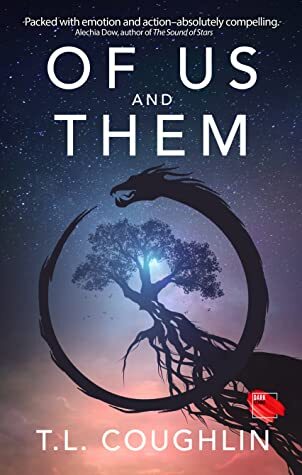 I love first-person writing in general, but I find it lends itself particularly well to YA books because of the sense of immediacy and clarity. This particular first-person story focuses on Evren, a teenager who lives an almost ascetic life, alone, with the exception of her stern, dominant, and unwavering mother, Ignis.
I love first-person writing in general, but I find it lends itself particularly well to YA books because of the sense of immediacy and clarity. This particular first-person story focuses on Evren, a teenager who lives an almost ascetic life, alone, with the exception of her stern, dominant, and unwavering mother, Ignis.
Evren and Ignis reside in a reclusive, high-tech hideout, in still-picturesque 22nd century British Colombia. Ignis is also her daughter’s combat trainer. Evren has a thirst for knowledge, a sense of curiosity and wonder, a warrior’s spirit, and typical adolescent insecurities, exacerbated by her unique situation, and the restrictions imposed on her by a silently disapproving parent.
Evren must prepare to be a superior fighter, as she is destined to become a Paladin for the elite and clandestine organization, Nexum (which Ignis leads). According to legend, Paladins are knights of King Charlemagne’s court, a parallel to the Knights of the Round Table in the court of King Arthur. Similarly, in the context of “Of Us and Them”, the Paladins are the protectors and vessels of the Leviathans, an alien species, reminiscent of dragons.
Leviathans are supposed to be the saviours of humankind. The Leviathans are prophesied to prevent humans from further destroying the natural environment, which by the 22nd century, has become severely compromised.
Unfortunately, the arrival of the Leviathans is delayed, and the cause of the delay is apparently Evren herself. Evren is frustrated and guilty that she is the last of the Paladins to have her ouroboros mature. Once this maturity reaches fruition, it will signify Evren is ready to become a full-fledged Paladin, worthy of hosting and guarding the Leviathans.
Yet, until Evren’s ouroboros matures, as the final remaining among a group of male and female Paladins, the ceremony to summon Leviathans to earth cannot take place. This fact weighs heavily on Evren, as she is anxious to fulfill her destiny, and find meaning to her young life.
Coughlin has composed a wonderfully detailed futuristic earth, replete with the cool gadgetry one expects to see in a sci-fi entry. With savoury descriptions and backstory that are never overdone, but tantalizing enough to give you the feeling of being with Evren, the action in the novel is poignant and the stakes are high.
Coughlin keeps the reader highly engaged, as Evren ramps up her combat training, fights off assassins, and shows courage and fortitude in confronting danger at every turn. The story adds a bit of a murder-mystery to the compelling plot, where Evren, the likeable protagonist, must also use her wits.
“Right now, I liked what I saw in the mirror, for she was formidable. Born in strife, molded through friction and the fires of purpose, and then cooled in the sweet notion of saving our world we wrought with fear and neglect. The drakonum sung to the playing of my heartstrings and I was a work of art. If this was to be my last memory, so be it. But I hoped it wouldn’t. That I would be there, to deliver a world anew. I was to be a new empress, a leader, a prophet, a deliverer, a queen of the new era. But for now, I was Evren, a daughter, a fighter, and now a friend.”
Well fleshed out characters, salient reflections on broader themes, a dash of humour, burgeoning young romances, great diversity and LGBTQ + representation, make for an awesome YA novel. “Of Us and Them” has all these components, and much more.
Yet, like the best of the genre, “Of Us and Them” is not a great novel merely because it is awash with teenagers as characters. The skill of Coughlin is that she is able to write, as an adult, so seamlessly from the perspective of a teenager. Coughlin is appropriately vigilant in not sounding too “adult”, writing from the first-person perspective.
This author knows how to capture the emotional truth of teenagers with conciseness, but still heart and realism, including all the sometimes immature and inexperienced thought-processes, frustrating choices and inexplicable decisions, and requisite pop-culture references.
Of course, none of this implies Coughlin’s writing is anything other than sophisticated. Her prose is engaging, her overall writing superb. Be warned: the novel ends on a cliff-hanger, and the reader will be left salivating for the next installment.
This is a highly impressive first book by an up-and-coming author, who is bound to make a huge splash on the sci-fi YA scene with the release of “Of Us and Them”. Coughlin is a writer to watch, and I am fascinated to see where Evren’s story goes next.
Read Of Us and ThemReview- The Last Stand of Mary Good Crow by Rachel Aaron
The post REVIEW – OF US AND THEM BY T.L. COUGHLIN appeared first on BEFOREWEGOBLOG.
June 12, 2022
Review – The Last Stand of Mary Good Crow by Rachel Aaron
fans of the Weird West and urban fantasy both will enjoy this novel
THE LAST STAND OF MARY GOOD CROW is a fantasy Western by Rachel Aaron (Minimum Wage Magic). As anyone who knows me can attest, I am a huge fan of Weird Westerns. In addition to writing my own, I’m a huge fan of R.S. Belcher’s Golgotha series and the indie Bulletproof Witch series by Francis James Blair.
 Honestly, after finishing it, I think it is better than all of those books.
Honestly, after finishing it, I think it is better than all of those books.
The premise is it is an alternate history version of Earth during the Wild West expansion. Rather than gold, the most valuable substance is the mysterious “crystal” that possesses many mystical properties that amount to allowing magic to be used. It is, understandably, sought by many-many prospectors. The town of Medicine Rocks, which is a name none of the settlers understand, is full of fortune hunters willing to do anything to get more of it. Despite the name, the book is actually about three separate women who share the narrative.
The first is the titular Mary Good Crow, a young half-Lakota woman raised by Catholic Nuns and subject to all the racism you would suspect. Mary is capable of “hearing” crystal and serves as a guide through the labyrinthine mines beneath Medicine Rocks. This is despite the fact the prospectors are as inclined to cheat or assault her as pay her for her time. Mary is a really nice young woman but a bit too demure and polite, which may be a literal survival mechanism in her case. Those expecting a spitfire with her will be sadly disappointed but the other two more than makeup for that.
In addition to Mary, there’s also Josie the (seeming) rich girl from back East who is coming to revive her uncle’s failing mining business. She wants to become a rich mining baroness and achieve independence but has found the majority of her inheritance has already been stolen by the crooked forces inhabiting this town. Finally, there’s Ren, who has allied herself with those corrupt forces but is Josie’s only friend. Ren would do anything to find out who killed her family and that includes betray a childhood companion who wants to go into business with her. She’s also got haunted crystal pistols containing the ghost of her insane evil wizard father. That’s a thing, apparently, yeah.
It is not a romanticized view of the West since much is made of the US cavalry’s terrifying effect on Mary Good Crow as well as the fact they fully endorse Custer’s cowardly attempt to take the Sioux nation’s women and children hostage. That particular event is happening simultaneously with the book and threatens to upend the plot about locating a mother load of crystal. Some people will love the tie-in to actual history while others may feel it’s in poor taste. I am more of the former than the latter.
Oddly, in addition to the Wild West, the book strongly reminds me of Final Fantasy VII. The harvesting of the crystal is analogous to harvesting mako. Humans and their greed want to rip it from the Earth no matter the cost with devastating consequences. However, it is so useful and powerful that you understand why they’re doing it. Certainly, it’s the only thing that might help the Sioux stop the genocide of their people. Nevertheless, the book gives a kind of environmentally friendly Aesop of, “Don’t take the Lifestream crystals from the Earth.”
I very much enjoyed the twists and turns throughout this book and strongly recommend it.
No one’s allegiances are entirely set and the only genuinely good person in the story is Mary Good Crow. Even she has a dark side that she struggles to keep suppressed as a matter of sheer survival. I think fans of the Weird West and urban fantasy both will enjoy this novel.
Read our interview with Rachel Aaron
Read The Last Stand of Mary Good CrowThe post Review – The Last Stand of Mary Good Crow by Rachel Aaron appeared first on BEFOREWEGOBLOG.
June 11, 2022
#SPFBO8 Review and Cut – The Library by Casey White
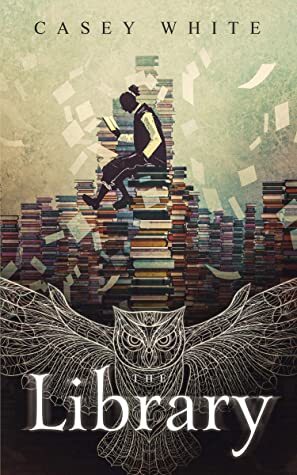 What is The Library About?
What is The Library About?With eternity ahead and all of man’s knowledge at his fingertips, Daniel just wants out.
He was too young to have any expectations when he was dragged into the grand Library of Alexandria – a massive, magical catalog of all human knowledge. Too young to understand the responsibilities being foisted on him. Too young to know that he was to become the next Librarian.
He knows now.
As the boy named Daniel grows into the Librarian named Owl, he realizes the truth; the cage he’s caught in is beautiful, and filled with knowledge, but a cage nonetheless. With that realization is born a longing for freedom he can’t push aside.
Such longings can be used, though – and there are many who would seek power over the Librarian and Alexandria.
But how can he tell friend from foe when all he’s ever had was himself?
My Thoughts
Daniel, an eight-year old boy, meets a stranger in a park. Soon after, he becomes feverish and ends up in a strange library filled with magic.
Now, at the beginning of all of this, he asks for his mother, but that fades soon. Instead, he has Jean, or Crow, the Librarian of Alexandria.
Their relationship is the core of the book, and it’s a fairly standard mentor-apprentice one. I would have liked to have seen more disorientation or more excitement or more reaction from Daniel as he’s drawn into this world. After the initial scene he took too much in stride. I also feel like his age was a stumbling block. I don’t think the book intended to be middle-grade but eight’s young even for YA.
Libraries are one of the best places in our world. You can take out whatever books you want, for free, and get lost in whatever book you choose. So I admit, I was hoping there’d be a bit more fun with the library aspect of the book. What kinds of deep lore would be in such a place? How are books organized? Are there secure vaults for the more dangerous grimoires? While the Library of Alexandria is a fun, interesting setting, (and I liked how it seemed to be responsive and somewhat aware) it’s more focused on the magical aspect and didn’t incorporate enough of the library aspect.
The writing was quick, clear, and smooth, and the book reads fast. The Library is part of a vaster series of interlinked novels, but it is the first in its subseries, The Librarian of Alexandria. It takes place after a timeline gap from White’s Spark of Divinity series and before Remnants of Magic.
Even with the positives of clear writing, and an interesting plot, this is a cut for me. Please check out this novel and the next one in the series, The Librarian.
Read The Library by Casey White#SPFBO8 Review and Cut -; Way of Thieves by Craig A. Prince Jr.
#SPFBO8 Review and Cut-; There’s Magic between Us by Jillian Maria
The post #SPFBO8 Review and Cut – The Library by Casey White appeared first on BEFOREWEGOBLOG.
#Bookcook A.D New Orleans After the Deluge by Josh Neufeld
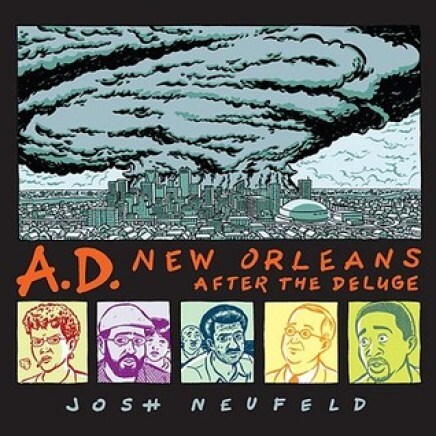
About
A stunning graphic novel that makes plain the undeniable horrors and humanity triggered by Hurricane Katrina in the true stories of six New Orleanians who survived the storm.
A.D. follows each of the six from the hours before Katrina struck to its horrific aftermath. Here is Denise, a sixth-generation New Orleanian who will experience the chaos of the Superdome; the Doctor, whose unscathed French Quarter home becomes a refuge for those not so lucky; Abbas and his friend Mansell, who face the storm from the roof of Abbas’s family-run market; Kwame, a pastor’s son whose young life will remain wildly unsettled well into the future; and Leo, a comic-book fan, and his girlfriend, Michelle, who will lose everything but each other. We watch as they make the wrenching decision between staying and evacuating. And we see them coping not only with the outcome of their own decisions but also with those made by politicians, police, and others like themselves–decisions that drastically affect their lives, but over which they have no control.
Overwhelming demand has propelled A.D. from its widely-read early Internet installments to this complete hardcover edition. Scheduled for publication on the fourth anniversary of the hurricane, it shines an uncanny light on the devastating truths and human triumphs of New Orleans after the deluge.
My Thoughts
I think much like those who lived through 9/11 can remember where they were or what they were doing the moment the plane hit The World Trade Center, those who saw the heartbreaking images coming out of New Orleans and Biloxi also remember the time and place. I know I did. Both are significant watershed moments in American culture and history. For 9/11 it was the start of what has been deemed fear culture. For Katrina, it was a stark look at race and poverty relations in the US as well as knowing that American relief efforts can fail you. Despite best efforts to the contrary. It is hard things to talk about, and hard things to convey on paper. But as they say, a picture can tell a thousand words…This graphic novel certainly did.
“Seeing my books and comics was the hardest, it made me think that it would have been easier if a tornado simply hit the house and flung it to another city. At least then we wouldn’t have to walk atop the things I cared most about. “
A.D depicts seven different stories from seven different people and perspectives. Each experienced the hurricane firsthand in one way or another. Some stayed, some fled, some went to the Silverdome, and some rode it out on top of a convenience store. A single-story couldn’t tell a true tale about the people of New Orleans, but taken in aggregate, the reader definitely achieves a good understanding of what the city went through. It is both powerful and visceral and a tad unsettling.
I chose this story for this week’s #bookcook as an homage to New Orleans food and culture. New Orleans is a magical place and not the Disney version of magical. More like the dark side of magic. It is hot, overgrown, and mystical. The drums and jazz of the nightly music cause a constant throb that you feel not only in your bones, but in your soul. When you are there, you want to become a part of the culture and get swept away by it: Food, dancing, music, passion, and everything that whispers in a sultry tone of voice, “I am the south.”
To Read A.D New Orleans After the Deluge by Josh Neufeld
There is nothing that says, New Orleans, like a good gumbo. This recipe was taken from Big Oven
INGREDIENTS
2 ounces Margarine
3 cups onion ; small dice
1 1/2 cups celery ; small dice
1 1/2 cups green bell pepper ; small dice
1 pound chicken breast ; medium dice
1 pound smoked sausage or andouille sausage ; sliced
8 ounces shrimp pieces
2 qts Chicken broth
1 cup canned tomatoes ; diced
1 each Bay leaf
1/2 teaspoon Thyme
1 1/2 tsp salt
1/2 teaspoon Black pepper
1/4 teaspoon Cayenne pepper
1/2 teaspoon tobasco
2 tablespoons Worcestershire Sauce
1 teaspoon Garlic powder
6 ounces Butter
6 ounces Flour
9 ounces okra fresh or frozen ; sliced
gumbo filet powder
1/2 cup Water
INSTRUCTIONS
Melt 2 ounces of margarine in a large soup pot. Add chicken and saute until cooked halfway. Add sausage and vegetables and cook until vegetables are tender. Add chicken broth and seasonings and bring to a simmer. Make a black roux in a separate pan. Heat butter very hot and add flour. Turn heat down to medium. Stir frequently until the roux becomes very dark, almost black in color but not burnt. (This takes practice) Slowly alternate soup into roux and roux into soup whipping until thickened and smooth. Simmer for 30 minutes. Add shrimp and okra. Simmer until shrimp is cooked about 2 minutes. Remove from heat. Dissolve Gumbo file powder in water. Slowly stir into soup. Serve plain or with white rice
#BookCook Sweeney Todd -More hot pies! More hot pies!
The post #Bookcook A.D New Orleans After the Deluge by Josh Neufeld appeared first on BEFOREWEGOBLOG.
June 10, 2022
#SPFBO8 Review and Cut – Way of Thieves by Craig A. Prince Jr.

A magical scepter can destroy the world …
… a band of thieves plan to steal it.
Siblings, Brendan and Kiera are in for the assignment of their lives. As descendants of dragons, magic is in their blood, and such a skill is almost as valuable as gold to their guild of thieves. Without any memory of life before becoming orphans, the two are tasked with stealing the revered Revarium Scepter from the Sorcerer’s Guild.
It’s time to grab their dragon powder, prepare for dangerous quests, and discover the truth of their heritage before the entire world is destroyed.
Ocean’s Eleven meets Game of Thrones in this gritty epic fantasy that you’ll love, because everyone loves a magical heist.
My Thoughts
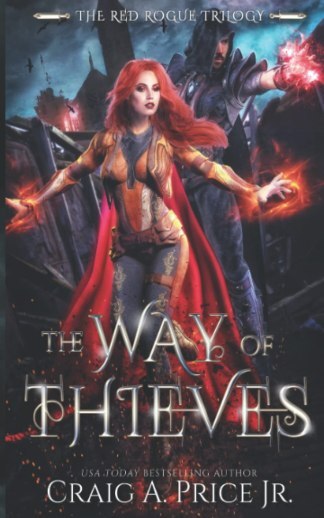 I LOVE thieves and assassins so within the first few chapters when I found out that this world operated on a ‘guild’ system with a Nobles Guild, a Sorcerers Guild, a Thieves Guild and an Assassin’s Guild among others, I was instantly hooked. The prologue really hooked me and really prompted me to continue on.
I LOVE thieves and assassins so within the first few chapters when I found out that this world operated on a ‘guild’ system with a Nobles Guild, a Sorcerers Guild, a Thieves Guild and an Assassin’s Guild among others, I was instantly hooked. The prologue really hooked me and really prompted me to continue on.
The downside is that there were simply too many POVs to tell an effective story. It didn’t feel like each POV was introduced sufficiently before the story jumped somewhere else only to come back when convenient. The chapters were also quite short so the POV not only hopped characters frequently but consequently the narrative then hopped around. In addition to a choppy narrative, and numerous POVS there were also some editing and typo errors including a character’s name that switched between Mirabelle and Mirabella several times in a matter of a few pages.
Overall, I really wanted to love this but it just didn’t work for me, this is a cut of The Way of Thieves.
Read The Way of Thieves
Review – Dreadnaught by April Daniels
The post #SPFBO8 Review and Cut – Way of Thieves by Craig A. Prince Jr. appeared first on BEFOREWEGOBLOG.
Interview with Jed Herne, Author of Siege of Treboulain
We are excited to share an interview with author Jed Herne about his latest endeavor, the game Siege of Treboulain. Check it out!
 Siege of Treboulain could also have been a great fantasy novel. What made you decide to tell that story through the medium of a game?
Siege of Treboulain could also have been a great fantasy novel. What made you decide to tell that story through the medium of a game?Writing an interactive novel is fundamentally different from a regular book. You have to keep all the storytelling quality of a novel – the complex characters who grow and change, the twists and the suspense, a cool magic system, and interesting ideas to make the reader grapple with. But because it’s a game, you have to consider other things.
The biggest consideration is the nature of choice. The best games force players to make hard choices with no obvious right answer. It’s in these crisis moments that players get to see who they truly are.
That’s why creating a siege game interested me. You can’t get much harder choices than the ones you’ll face as the ruler of a city under attack.
I felt a strong sense of responsibility and attachment to the characters almost right away – it was as though instead of playing to “beat the game,” I was playing to “save the people of Treboulain.” What did you do to create and foster that sense of connection?Thank you! Right from the start, the goal was to create an experience where it wasn’t about reaching the end and finding out whether you ‘won’ or ‘lost’. That would be boring. Instead, I wanted the focus to be on the journey – on the characters you meet along the way, the challenges you overcome, and the things you discover about yourself. I’m really pleased with the ending, of course – but this is fundamentally a story that’s all about relishing the middle.
 The interactive nature of the game certainly helps with the connection to other characters. When you’re in control of the story, you feel a much deeper sense of ownership. These peoples’ lives are directly affected by your decisions (sometimes in great ways, sometimes in horrible ways). I’ve found this leads to almost instant immersion from just about everyone who’s played the game.
The interactive nature of the game certainly helps with the connection to other characters. When you’re in control of the story, you feel a much deeper sense of ownership. These peoples’ lives are directly affected by your decisions (sometimes in great ways, sometimes in horrible ways). I’ve found this leads to almost instant immersion from just about everyone who’s played the game.
And then in terms of the characters themselves – there’s four main non-player characters in the game (NPCs). I tried to make each of them interesting and complicated enough such that any one of them could be someone’s favourite. I think that approach paid off. My favourite always tended to be whoever I was writing at the time! When you find yourself having that reaction to your own story, it tends to translate well for readers.
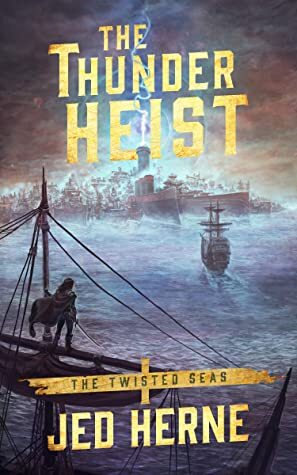 Sometimes a choosable-path game will leave out important details and nuances from a list of choices: for example, “take the crown” might mean “jealously snatch the crown” or it might mean “humbly and reverently pick up the crown.” One thing I appreciated very much about Siege of Treboulain is that I never felt like the game did something I didn’t mean. How did you avoid that pitfall?
Sometimes a choosable-path game will leave out important details and nuances from a list of choices: for example, “take the crown” might mean “jealously snatch the crown” or it might mean “humbly and reverently pick up the crown.” One thing I appreciated very much about Siege of Treboulain is that I never felt like the game did something I didn’t mean. How did you avoid that pitfall?I’m glad you felt that way, because in early drafts, that wasn’t always the case!
Mostly, I avoided this issue thanks to feedback from my excellent editor, Abby Trevor, along with lots of playtesting. We had probably about 20 people go through an early version of the game to pick up issues exactly like this.
All this feedback and testing made me feel extremely confident in the story when it released. At this stage, I’ve pretty much seen almost every possible response and reaction that a player could have.
It’s got me thinking that I’d love to create a similarly sized early-reader team for my own self-published novels. I’ve got a few people who read later-stage drafts, but it would be awesome to grow the team even more. Feedback is so ridiculously useful for improving a story. Especially with something as interactive as a game, you just can’t predict how everyone will react ahead of time.
It’s impossible to see everything in the game with a single play-through, since certain choices will necessarily close off branches of the story. Some players will play the game again and again in order to see all of its content, and others will play through it once or twice and be content with the version of the Siege of Treboulain story they experienced. Would you say the game is designed to cater to one style of play more than the other?In early drafts, it was certainly harder to succeed if you choose to boost some stats but not others. However, this wasn’t something I wanted. I wanted a game where it didn’t matter whether you played as a magic-wielding scholar or a warrior who relied on brute force – you could be guaranteed of a good time no matter what build you used.
To achieve this, we ran a bunch of simulations and tests to make sure that this was the case. Initially, it wasn’t. If you’d created a character with high agility, agility tended to be less useful than other stats. However, this testing allowed us to balance things out. Now it’s at the point where you don’t get penalised for picking certain attributes.
 One thing that’s still not clear to me is whether RNG is involved in the game logic anywhere – in other words, does an event say “any score of X or higher will win,” or is there some dice rolling happening in the background?
One thing that’s still not clear to me is whether RNG is involved in the game logic anywhere – in other words, does an event say “any score of X or higher will win,” or is there some dice rolling happening in the background?There’s no random number generation involved in the game – all choices are resolved by testing your stats against certain thresholds. If they pass the threshold, they pass the choice.
Can you tell me a little bit about the process by which you wrote the story? I’m particularly curious whether you worked on one chapter at a time, or if you moved around from chapter to chapter in order to work on the longer narrative threads?First, I spent about 3-4 months developing a detailed outline, which had key plot points for each chapter. The final document (which went through 5 rounds of revision with my publisher) was about 40 pages long.
From there, I wrote the story one chapter at a time. I generally had a rough, big-picture idea of what I wanted to do with each chapter. For example, chapter one starts with a festival, and ends with an army approaching your city.
The space between? That was usually a lot less structured. For some chapters, I had a very clear idea of these interstitial plot points. Then for other chapters, I let myself discovery-write through, following whatever paths seemed the most interesting.
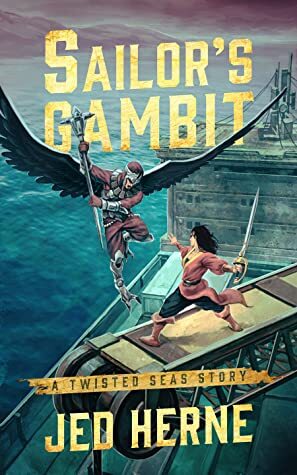 At the end of each chapter, I’d send it to my editor. She’d read through, provide a bunch of feedback, and then I’d incorporate it. I’d send it back to her again, and the cycle repeated. Once we were both happy, I’d move onto the next chapter.
At the end of each chapter, I’d send it to my editor. She’d read through, provide a bunch of feedback, and then I’d incorporate it. I’d send it back to her again, and the cycle repeated. Once we were both happy, I’d move onto the next chapter.
Occasionally, I’d sometime start the next chapter before the previous one was given the stamp of approval. But for the most part, I tried to take it one chapter at a time.
Having this fast feedback loop – of spending an average of 3-5 weeks writing a chapter, then getting feedback right away – was a lovely way to work. It sped up my game writing skills immensely.
This genre of game is very appealing to amateur game developers because of its low technical barriers to entry (no graphics, no music, pretty straightforward code). But of course that doesn’t mean making a game like this is easy: if someone were to try their hand at making their own choosable-path adventure, what words of advice (or warning) would you want to share with them?It’s definitely a very accessible way to ship a game. Most people can’t single-handedly create the next Elden Ring. But writing something like Siege of Treboulain is something you can do.
In terms of advice:
Listen to (or read) interviews with people who’ve written what you want to write. You can also try to interview them yourself if you have a platform. For me, it was incredibly helpful to use my Novel Analyst podcast to interview Kate Heartfield and Andrew Swann. Both these authors wrote well-received stories for Choice of Games, so they gave amazing advice. Kate even looked over my pitch and gave me feedback before I sent it through to Choice of Games! She certainly played a part in helping me get a contract with Choice of Games, who went on to publish my story.Focus on impossible choices. Choosing between helping a character or doing nothing is not that interesting. Being forced to choose between helping one character or helping another – now we’re cooking. In moments of crisis, a player learns who they truly are. So put them into crisis.Remember that you’re not a good representative of all players. Different people want different things from a story. You don’t have to appeal to everyone, but it is worthwhile asking yourself: how might this scene be someone’s favourite scene?Have a cohesive theme and arc to unify the story. In an interactive novel, it’s easy to end up with a jumbled, disparate narrative. One way to counter that is to have a clear idea of what the story is about. What moral question are you exploring? In the case of Siege of Treboulain, that question was: what is the right way to lead? Once you know what your story is about (at a big-picture level), it makes all the smaller-picture details easier to create.Keep it simple. Every extra stat, character, and choice multiplies the amount of scenes, editing, and issues you have to deal with. Case in point: once I’ve written an outline, I’m usually excellent at knowing how long my novels will be. But with Siege of Treboulain, I was expecting a 200,000-word story … and ended up with a 280,000-word beast instead. There’s absolutely nothing wrong with length, or scale. If anything, the game’s length may be a reason why it’s sold so well (more words = better immersion and value for players, in a lot of cases). Still, just remember that there’s no need to add complexity. The complexity will find it’s own way in.Lastly, if you’re interested in the promotion/marketing side of things, I broke down my launch strategy in more detail in a recent podcast episode (Video link | Audio link). The game sold about 3,300 copies in the first week, so I think we did something reasonably smart with our promotion.
I thought it was incredibly clever to change the gender of certain characters depending on how the player describes their own romantic inclinations.Thanks! I can’t really take credit: this is one of the things Choice of Games suggests for writers to do. From my perspective, it makes a lot of sense. I want as many readers as possible to have awesome, full experiences of the game. An easy way to do that is by making adjustable romance options.
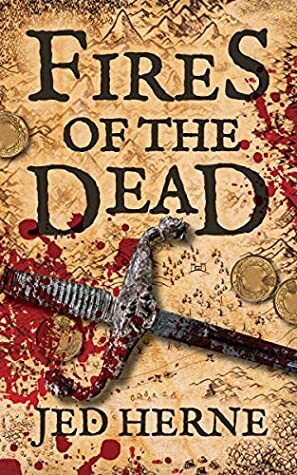 Are you planning to make more games (or stories) in the Treboulain universe?
Are you planning to make more games (or stories) in the Treboulain universe?Technically, I already have!
If you’ve read The Thunder Heist, you’ll notice a character who also appears in Siege of Treboulain, even though the stories are set on different worlds.
Depending on which pathway you take in the game, you might also see mention of the Solscape – which is an interconnected universe of worlds and stories that I plan to develop more in the future.
In terms of direct Siege of Treboulain sequels, lots of readers have asked about those, which is incredibly flattering. I won’t rule out the possibility. But for now, I’m happy with it as a standalone. It was always intended to be a self-contained story, so I’m unsure if a sequel would work.
But, saying that, I always have ideas floating around in the back of my mind. If I came up with the right concept, it could be a possibility.
More likely, though, I think if I was to write another interactive fiction game, it would be a fresh concept altogether. Still epic fantasy, probably. But something that takes advantage of everything I learned from Siege of Treboulain to produce an even better experience.
For now, though, I’m focussed on writing my next novel, Kingdom of Dragons (which will hopefully be the start of a new series).
Does the game have any cheat codes / debugging commands you’d like to share with us? (Never hurts to ask! )
)I could tell you, but then I’d have to kill you…
No, unfortunately – there’s no cheat codes built into the game. To me, not having fully-maxed-out stats, and sometimes having no option but to fail at achieving things – that’s where the game becomes interesting. When you can’t always achieve everything, the few things that you can achieve feel more meaningful.
Having said that, it is entirely possible to succeed at every single choice you face in the game. But it does take a bit of skill to get there.
Check Out Jed Herne’s WorkThe post Interview with Jed Herne, Author of Siege of Treboulain appeared first on BEFOREWEGOBLOG.
Review – Book of Night by Holly Black
Holly Black’s foray into the adult market with Book of Night did not strictly come off with a bang as die-hard fans of her YA series’ had hoped, but more with a tentative hand raise of “Present.” This isn’t bad; Book of Night, the story of a thief turned bartender named Charlie Hall and her dealing with the world of murder most foul, robbery, and mystical shadows, was entertaining.
The premise is thus, “In Charlie Hall’s world, shadows can be altered, for entertainment and cosmetic preferences—but also to increase power and influence. You can alter someone’s feelings—and memories—but manipulating shadows has a cost, with the potential to take hours or days from your life. Your shadow holds all the parts of you that you want to keep hidden—a second self, standing just to your left, walking behind you into lit rooms. And sometimes, it has a life of its own.”
“If she couldn’t be responsible or careful or good or loved, if she was doomed to be a lit match, then Charlie might as well go back to finding stuff to burn.”
As far as positives for the novel, there are quite a few. Holly Black does well with dialog and characterization. A quality that she has carried on from her Folk of Air and Modern FairyTale series. Charlie is an interesting character, not specifically likable. She is a little too thorny to be likable, but she is certainly interesting. This is the start of issues for me. Charlie is enjoyable but not memorable. I wish she were, and maybe in future books, she will find her footing and start to crystalize into who she is meant to be. But right now, she has a little pluck, a little moxy, low self-esteem, bad luck with people, and a large heart for those she loves.
Vince, her love interest, was pleasant, but while I have a relatively clear picture of Charlie and a feel for her character, I don’t have that with Vince. He was a nice guy; that’s about all I got. This might be why the story did not connect with me as much as I wish it had. Vince is a critical person in Charlie’s life.
The premise is a fantastic concept, But I would have killed for more info about the world of magic. I love the idea of shadows taking on a life of their own for the select few who achieve the skill. But the magic part of the world came in drips and drops throughout the story, leaving me unsatisfied. The cost of shadow use is blood; if it is blood, let the story be dark. Blood as fuel is a dark concept, and I wish it were explored. Maybe it is because I tend to like my stories on the dark side of things, but I was aching to hear more about this dark magic.
“Never met a bad decision she wasn’t willing to double down on. Had fingers made for picking pockets, a tongue for lying, and a shriveled cherry pit for a heart.”
The pacing of the book is very uneven. The beginning is on the slow side. There is a lot of world-building and background info that Black is explaining, and I don’t mind that. I think that some readers may have an issue with that, though. The last half of the book was so jammed-packed with action that I got lost here and there.
Overall, this isn’t a bad book. I don’t think it is Black’s best work by any metric, but I look forward to seeing where this series goes once it finds its footing and Charlie solidifies a bit as a protagonist.
Read Book Of Night
The post Review – Book of Night by Holly Black appeared first on BEFOREWEGOBLOG.
June 9, 2022
Interview With Richard A. Knaack
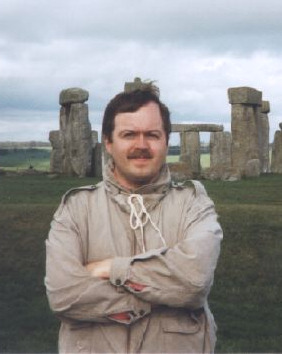 1. So tell us about Rogues Gallery.
1. So tell us about Rogues Gallery.ROGUES GALLERY is a pulp-style urban fantasy taking place in an alternate 1930 Chicago where the city’s champion, the Legionary, appears to have vanished. This means that the costumed villains that have risen up after the World War I — called “rogues’ by the headline-hungry press — pretty much have free rein. This is obviously bad for the city, but when the various rogues start colliding, things take unexpected turns.
2. What separates Rogues Gallery from other similar fiction?A unique setting and characters, with a look at the repercussions desperate situations bring.
3. Why write a superhero novel set in the 1930s?It’s a fascinating time period, plus one that was influenced by pulp heroes like the Shadow and Doc Savage. It’s a period where the previous century still lingers, but the future is just over the horizon.
4. What fascinates you about the 1930s Chicago era? You wrote another of your series, Black City Saint, there as well.I grew up in the area and often heard the stories about the Roaring Twenties and just after. I became fascinated with the period and the unique, if unsavory at times, society that was birthed in it. Chicago has a particularly interesting reputation at that time that lends a lot of flavor to the stories I write. The clothing, the cars, the decorations…there’s just so much that snares the attention.
4. Tell us about the protagonists.The protagonists, if the term can be used for them, are all rogues with the exception of Inspector Franklin Merrett, a black detective who worked with the Legionary and still hopes for his return. The rogues who have some interest in not seeing their city brought entirely into chaos are the Plunderer (who is an art thief with an autogyro, not to mention a scarred veteran of the Great War), Doctor Arcanum (a female rogue obsessed with finding true magic and willing to steal anything that will aid in her quest. In the meantime, she uses stage tricks), the Shadow Master (a veteran rogue with the ability to create artificial darkness and who is a seasoned manipulator), Mirror (a female rogue seeking revenge for those who caused the death of her lover and whose reflective mask can both hypnotize and drive one mad), the Roach (a murderous dweller of the sewers), and, maybe, the Fourth Horseman (who rides a clockwork steed and hides more than one terrible secret).
5. Tell us about the antagonists.That’s easier. There’s Bloodwyrm (a gas mask-wearing pyromaniac obsessed with locating the Legionary, even if the entire city has to pay in the process). Lady Cain (a beautiful blonde woman wearing a top hat and what seems a dancer’s version of a tuxedo. She is sadistic, certifiable, and has deadly little weapons like her cigarette holder and lapel flower. She and Bloodwyrm are lovers, of course.) The Wolf Pack (a specialized group of henchmen willing to work for anyone at the right price. Faceless with their wolf emblem masks. If the current alpha of a pack perishes, the next in seniority simply replaces him. They have large numbers, all working for Bloodwyrm right now). Behemoth (a huge Irish thug, more of a henchman, so long as you pay him right and don’t betray him. Extremely strong and so dense of muscle it’s hard to stop him).
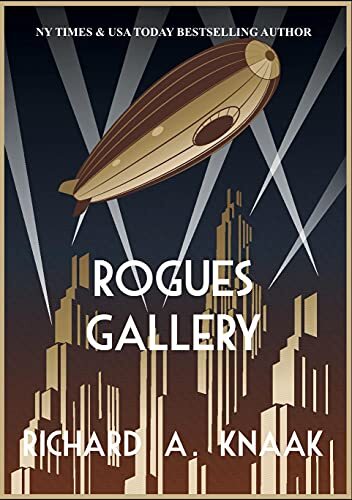 6. What do Pulp heroes mean to you?
6. What do Pulp heroes mean to you?A time of pure adventure, with heroes who will face all odds to do right. Heroes that will confront evil without hesitation and do what must be done.
7. Do you have a favorite character among them?Well, likely the Plunderer. I just found myself enjoying his character most of all.
8. Is this meant to be a standalone or part of a series?It’s a standalone for now (with one short story in the back and two more for those who order the ultra limited edition hardcover from me). However, I would like to return. There’s more to tell about some of these characters, plus, I have some additional rogues in mind. Then, of course, there’s the question of the Legionary…or is there?
9. How has the reception been for the novel so far?Excellent. Those who have read it appear to have overwhelmingly enjoyed it. It was self-published and word seems to be spreading. I’m pleased.
10. What can we expect from you next?I’m working on my REX DRACONIS saga, both the next novel — War of the Dragon Moon — and a series of novellas concerning the minotaur empire there (stories of honor and loyalty). After that, a new Dragonrealm novel, followed by Black City Angel, 4th in my series.
Read Books by Richard A. KnaackInterview with Author Josh Winning
Interview with Author Rachel Aaron
The post Interview With Richard A. Knaack appeared first on BEFOREWEGOBLOG.
Review – Dreadnaught by April Daniels
DREADNOUGHT is the first novel of the Nemesis series. The premise is Danny Tozer, young transgender girl, is there when Dreadnought the world’s greatest superhero is killed. Danny inherits the power of Dreadnought but also becomes her idealized self (effectively Supergirl). This is problematic since Danny is still hiding her trans identity from her transphobic parents as well as schoolmates. She is, after all, only fifteen. But there’s more to her life than dealing with them. There’s an entire army of evil she needs to defeat as the other superheroes have nothing on Dreadnought–and the world needs a Dreadnought.
 I really liked this book and have to say that April Daniels did an excellent story of superheroics and a Spiderman “coming of age” origin while also telling a tale of a trans teen coming to terms with their new identity. Danielle is completely aware of who she is and what gender she is meant to be but is hiding it from her father.
I really liked this book and have to say that April Daniels did an excellent story of superheroics and a Spiderman “coming of age” origin while also telling a tale of a trans teen coming to terms with their new identity. Danielle is completely aware of who she is and what gender she is meant to be but is hiding it from her father.
Danny wants to be a hero, at least a little, but is mostly happy that she’s been blessed with teenage supermodel looks that reflect how she wishes she had been born. Danielle doesn’t jump into superheroism automatically but deals with a lot of conflicting emotions regarding the process. The older superheroes of the setting are clear that it is a demanding and sometimes traumatizing life.
There are some people who will ask whether this is more a transgender awakening book or a superhero book. It’s definitely both and the two don’t conflict too much. There’s perhaps a bit too much time spent on the father (who is, sadly, a one-dimensional piece of crap–but that’s just how some parents are) but it is about Danny coming to terms with fact they don’t have to be afraid anymore. They are the most powerful girl in the world and that liberation is a universal escapist fantasy that I think will appeal to all readers.
I like the supporting cast and appreciate virtually every character except Danny’s family. Graywytch is an ugly bigot but is at least interesting in her reasoning (it offends her witchcraft-based religion), Valkyrja is very entertaining in her attempts to be supportive to Danny, and Doctor Impossible (no, not the one from Soon I will be Invincible) is highly entertaining. I think I loved the character of Calamity, a black teenage cowgirl vigilante, the most.
If I had one complaint, it is the fact that Danny does have to deal with such ugly and vile transphobia throughout the book. It’s not that it isn’t important for the book but that it is an unfortunate thing that makes the book uncomfortable. That it is something we have to deal with in the real world so often and that it must sadly also be confronted in our escapism. So a warning on the content as it doesn’t shy away from the slurs thrown at many trans teens in RL.
The highlight of the book for me was the easy friendship between Calamity and Danny. I don’t know if Danny and Calamity are going to have a romance (Danny being a gay woman) but I think they’d make a cute couple if they were. I also appreciate how Danny, who is going to inherit the “whitecape” (noble paladin type) of Dreadnought, has ended up befriending a “graycape” (vigilante) as their friend as well as a mentor.
So, did I like it? Oh yes. I picked up the sequel immediately. I should note that April Daniels is also writing from her own experiences with Danny’s trans experience and this is something that made me more interested in checking out the book. This doesn’t break the mold of superhero literature but that isn’t necessary for someone who is looking for something that homages all the classic tropes as well as tells a deeply personal story.
Read DreadnoughtThe post Review – Dreadnaught by April Daniels appeared first on BEFOREWEGOBLOG.




